USS Lexington found: Paul Allen finds aircraft carrier that saved Australia in World War II
IT was the day that decided Australia’s fate. The aircraft carrier USS Lexington was lost in 1942 in a desperate bid to block a Japanese invasion force. Now, 76 years later, she’s back.

IT was the day that decided Australia’s fate.
Japan had crushed the US battleship fleet at Pearl Harbor. It had swept Britain, the United States, the Netherlands and Australia aside in South East Asia. Britain barely held on to Ceylon by the skin of its teeth.
Now a Japanese invasion fleet was advancing on Port Moresby, on Papua New Guinea’s southern coast. It was feared this would cut Australia off from the United States.
But the Japanese had another goal in mind.
It wanted to finish the job it had started at Pearl Harbor.
We've located the USS Lexington after she sank 76 yrs ago. #RVPetrel found the WWII aircraft carrier & planes more than 3000m (~2mi) below Coral Sea near Australia. We remember her brave crew who helped secure 1st strategic US win in the Pacific Theater https://t.co/20ehjafD7d pic.twitter.com/HIvxNUDbsX
— Paul Allen (@PaulGAllen) March 5, 2018
It wanted to entice the remnants of the Australian and United States navies — along with its aircraft carriers — into an ambush.
It almost worked.
A running battle ensued between May 4 and 8, 1942.
Two US aircraft carriers, USS Lexington and Yorktown, led the Allied resistance.
The Lexington was critically damaged. Despite the best effort of its crew, it was reduced to a burning wreck. It had to be scuttled.
Now, 76 years after it settled to the bottom, it’s been found.
It’s the latest find by billionaire Paul Allen.
And it’s in a remarkably well preserved condition.
Soon-to-be US ambassador to Australia, US Pacific Commander Admiral Harry Harris says he is elated at the find.
“As the son of a survivor of the USS Lexington, I offer my congratulations to Paul Allen and the expedition crew of Research Vessel Petrel for locating the ‘Lady Lex’,” he said in a tweet.
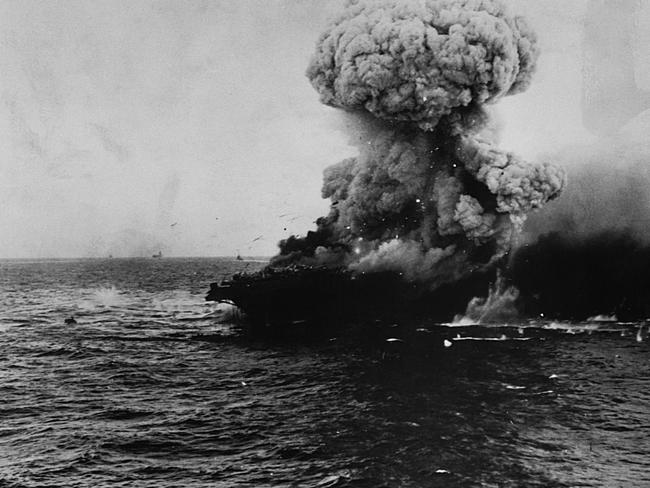
FINAL BATTLE
USS Lexington was the first fleet aircraft carrier to be sunk by opposing carrier aircraft in World War II (though Britain’s much smaller HMS Hermes had been sunk by Japanese dive bombers a few weeks earlier).
It was a totally new concept in warfare.
While fleets had played war-games involving aircraft carriers in the decades between World War I and II, the reality of their power — and vulnerability — had yet to be felt.
Britain’s aircraft carrier experience between 1939 and 1942 had been very different.
It had been fighting against land-based bombes in the narrow waters of the North Sea and Mediterranean. Several valuable ships had been sunk by submarine and warships. HMS Illustrious had barely survived a Stuka dive-bombing attack off Malta.
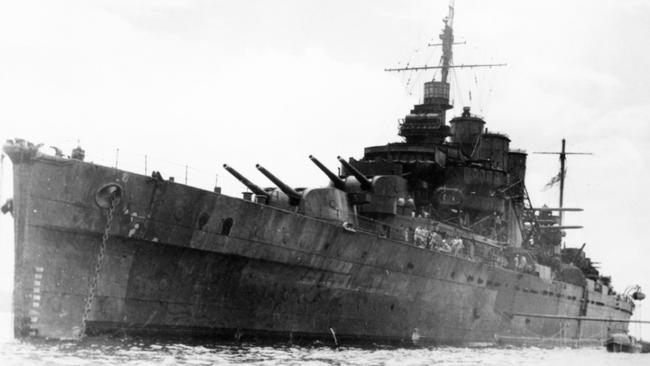
But, as neither Germany nor Italy had aircraft carriers of their own, such a clash had not been on the cards.
So when the USS Lexington and Yorktown went up against the IJN Shokaku and Shoho, it was a fight like no other that had gone before.
Lexington was big. But she was also relatively old.
RELATED: Survey reveals the shot that sank HMAS Sydney
She had initially been intended to be built as an enormous, fast, battlecruiser.
But treaties put paid to that idea part way through her construction.
So, instead of wasting the partially completed hull, she was converted to an aircraft carrier.
At Coral Sea, both sides detected each other
Both sides launched strike groups.
The US aircraft had difficulty finding their targets.
The Japanese did not.
USS Yorktown took one bomb hit.
The Lexington took two torpedoes and two bombs.
“Lady Lex” was left heeling heavily, with fires raging out of control along her length.
There was hope to save the ship: her engines remained intact.
But nothing could stop the fires.
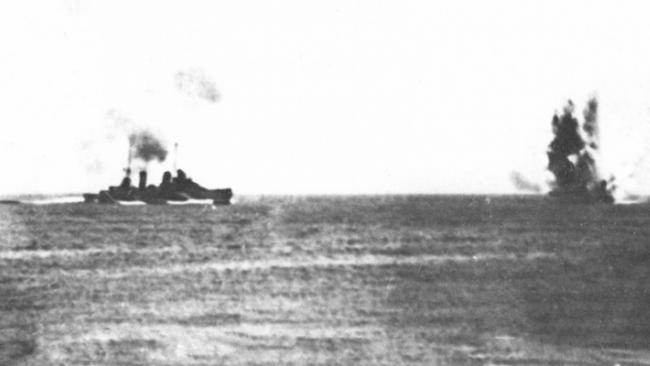
Eventually the flames found areas filled with fuel fumes that had seeped out of their containers because of the shock of the hits.
Lexington was rocked by another two explosions, and erupted into a fireball.
After six hours battling to save the ship, USS Lexington had to be abandoned.
Some 2770 crew were rescued. But 216 went down with their ship.
An escorting destroyer was given the task of putting the wounded aircraft carrier out of its misery.
It was the first battle in history where ships of neither fleet had set eyes on each other.
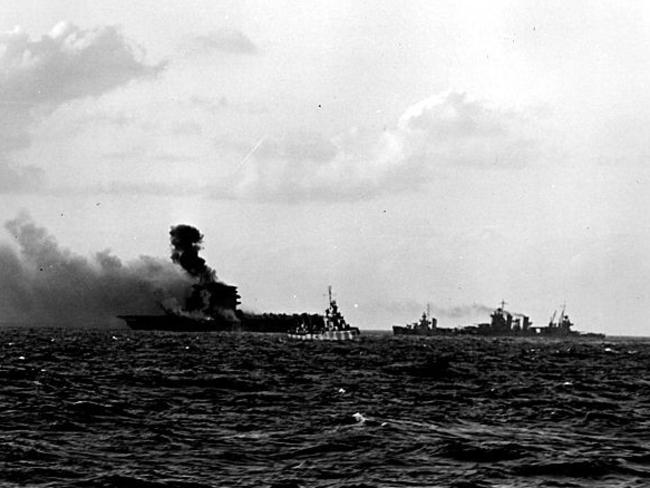
WATERY GRAVE
Paul Allen’s research vessel Petrel located the wreck of the USS Lexington yesterday.
According to a post on the philanthropist’s website, it rests some 800km off the coast of Queensland at a depth of about 3km

The find was the result of a six month project.
Photos so far returned by RV Petrel’s submersible show several aircraft that have tumbled out of the carrier and on to the ocean’s floor. Their original markings and paintwork remain remarkably clear.
The ship itself, while showing heavy scarring from the battle and the stresses of diving 3km to the sea floor, is also well preserved. Gun mounts and other fittings show only little sign of corrosion and deterioration.
RELATED: Shark disaster warship found
“To pay tribute to the USS Lexington and the brave men that served on her is an honour,” Allen said in a statement. “As Americans, all of us owe a debt of gratitude to everyone who served and who continue to serve our country for their courage, persistence and sacrifice.”
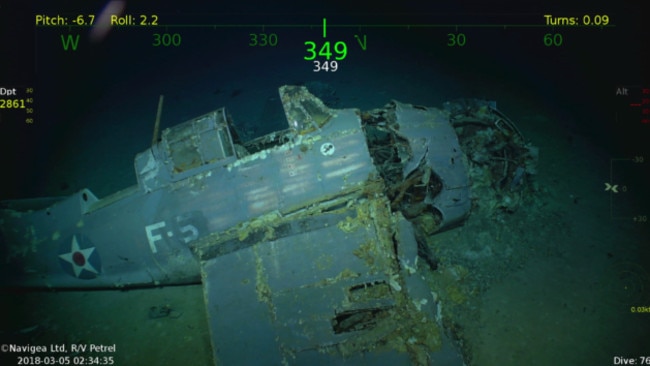
Allen’s expeditions have returned a haul of discoveries from World War II.
The cruisers USS Indianapolis and destroyers USS Ward and Italian Artigliere were found last year. The cruiser USS Astoria and Japanese battleship Musashi in 2015.
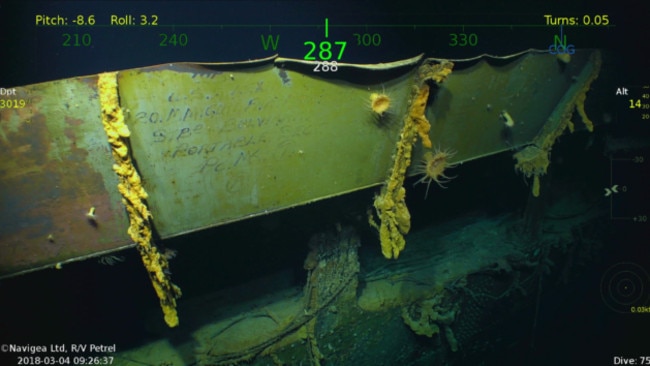
SACRIFICE AND GAIN
Both sides declared the Battle of the Coral Sea a victory.
Both were right.
It was a Japanese tactical victory. They had sunk more ships than they had lost.
But it wasn’t enough.
Strategically, the US and Australia had turned the invasion force back. But, more importantly, the allies had also inflicted losses on Japanese ships, aircraft and aircrew.
"Lady Lex" isn't the only discovery @PaulGAllen and his research team have found. Dive into their other undersea explorations https://t.co/neHgapxnVW#RVPetrel pic.twitter.com/A9VP7HD3ID
— Vulcan Inc. (@VulcanInc) March 5, 2018
Japan, for its part, lost the light carrier Shoho. And the fleet carrier Shokaku came out of the clash heavily damaged.
Significantly, Japan was not in a position to quickly replace them.
RELATED: The scandal of the last dogfight of World War II
“As we look back on our Navy throughout its history, we see evidence of an incredible amount of heroism and sacrifice,” retired US Navy Rear Admiral Sam Cox says on Allen’s website. “The actions of Sailors from our past inspire us today. So many ships, so many battles, so many acts of valour help inform what we do now.”
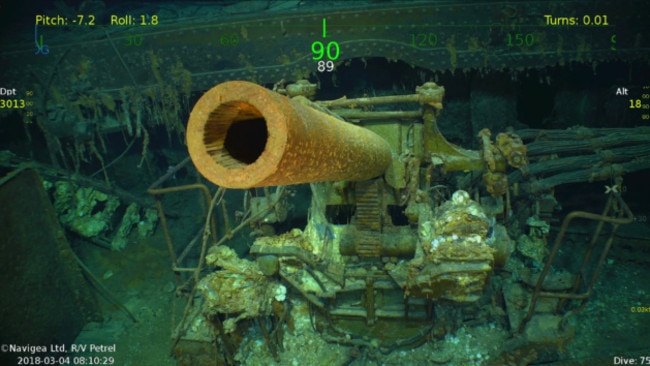
Admiral Harris said the Lexington represented the strength of the US-Australian alliance.
“We help secure the peace in the IndoPacific today alongside our allies and partners, including Australia, where I am currently visiting to meet with my counterparts and reinforce our amazing alliance,” he tweeted.
“I’ll visit the Australian War Memorial to honor those Australians who also paid the ultimate sacrifice in defending freedom across the globe.”
Statement from ADM Harris:
— U.S. Pacific Command (@PacificCommand) March 5, 2018
"As the son of a survivor of the USS Lexington, I offer my congratulations to @PaulGAllen and the expedition crew of Research Vessel (R/V) Petrel for locating the 'Lady Lex,' sunk nearly 76 years ago at the Battle of the Coral Sea." [1/6]




